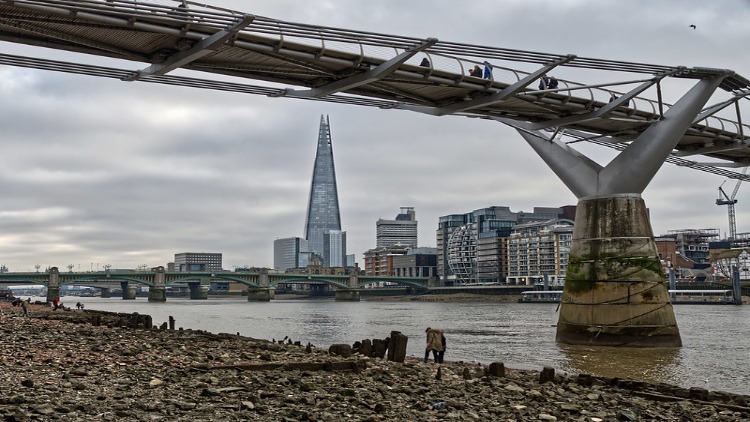The River Thames is the second largest river in the UK. It is 205 miles long and runs across the southern area of the UK, starting from the Cotswolds in Gloustershire, draining the whole of Greater London, and finishing at the Thames Estuary where it flows out to the North Sea. According to Locate International Active Search data on unidentified bodies in London, more than a quarter of all the unidentified bodies found in London are found in the River Thames, more than anywhere else in the capital. It falls to the River Police to recover the bodies and set about the sometimes painstaking business of identifying them.
Simon Gray, a former River Police officer based in Essex, says that at the Dartford Crossing, the deepest measurement that the water, below the bridge, is 13 meters. However, people do not realise that under the water is up to 25 meters of mud. “The majority of what has happened to people that fall into the river is that they end up in the mud. That’s what actually kills them. It’s not necessarily the fall into the water, and the shock of the water, it’s the fact that they end up stuck in the mud. The mud acts like quicksand and it sucks them in.” He says that when he is called to the south end of the river and finds a body, the body could have been in the mud for up to 12 days and has eventually floated back up to the surface. In the majority of the cases in the Thames, it is the mud that will take them under the surface and that is what makes it extremely hard for the police to find.
Gray says that the body can be traveling up to five miles an hour on the surface of the river and so in a short space of time, you could be up five miles down the river from potentially where the body may have originally gone in. He says; “We check the body for any form of identification and 99% of the time there is no identification of any of the people that we find.” The River Police’s first line of inquiry is whether they’ve been notified from services that there could be a relative or a friend who is looking for someone. If there are no reports of anybody going missing at the time, they then turn to the public and the press to alert them that a body has been discovered. “We’ve had instances where somebody is not seeing a neighbour for five or six weeks or not seeing them around. So, it’s not always us that is inquiring for information, a lot of the time it’s people coming to us. Sometimes it gets to the point where there just has not had any information in, we’ve not had any reports of anybody missing or anything like that.”

“One of our biggest tools is the members of the public,” Gray says. They are usually the ones who look out for anybody that might be sitting on the edge of the river or anything like that. “Obviously, it’s not always that their intentions are to jump off, but we’ll still have people sit along there when we advise them it’s not the best thing to do when there’s a bench 10 yards away from where they are,” Gray says that their main priority is the public and their welfare. For a member of the public to find and report on an unidentified body, it can be a very disturbing experience. “You’ve got no idea what to expect. Somebody could’ve sustained a major injury before they got into the water or somebody attacked them. You’ve got no idea until you get there and you see the body.”
Is there any potential aid for the difficult circumstances? Unfortunately, he says, there are no diving units for the river. “We used to have diving units but over the years they get disbanded which is due to costs. But obviously, with the strong current flow of the river, it’s extremely hard to try and dive into things like that. And it’s such a vast area that they could be there for days searching for them.” He says there are signs up explaining to people how deep the mud can be along the river.
The history of the River Thames and its safety precautions have changed over the years as measures such as warning signs and fencing have been put in place over the years. The RNLI lifeboats have been operating on the River Thames since 2002 and Gray says that people’s mindsets have changed as people are more informed about the dangers of the water, such as the shock of the water and the fast speeds of the river flow. He says, however, that there are always things to improve on and says that signposting of a different kind could work better. “At the moment, we’re asking people to stay wise and there have often been signs that say, ‘deep water’ and ‘stay away’ that doesn’t always help. It would be good if there were signs that are offering assistance, whether it could be phone numbers and people can just have a chat.”
Gray says that the communication between the policing that is involved has definitely improved in the last five years. “For example,” he says, “if the Samaritans have a phone call with someone who wanted to end their life, they will always call the police out as well. It may just be that they want to sit down and have a chat. I’ve had incidents in patrol where people will come into our space and will just sit and have a chat or a rant or a moan for however long they feel comfortable. And generally, most people will say, ‘I feel better now I’m going back home.”